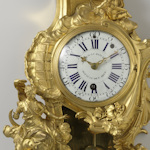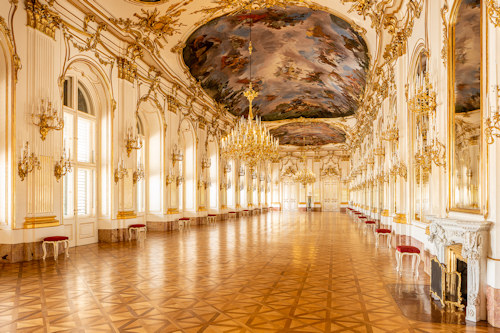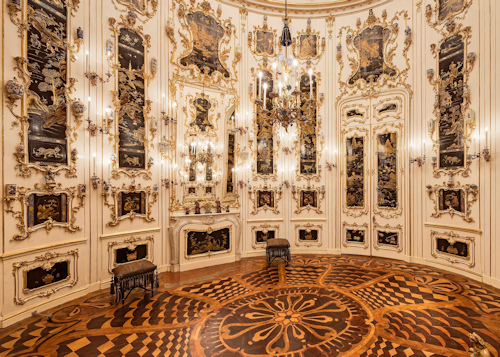
You’re in for a treat. The self-guided Schönbrunn palace tours take you through rooms full of priceless furnishings and décor, and all with a story to tell of Habsburg and European history.
- State Apartments tour covers around 9 rooms
- Focuses on the area around the Great Gallery
- Take the Palace Ticket tour for much more, though
- Book a Schönbrunn concert, experience & more*
- See also:
- Palace tours overview & ticket tips
- Schönbrunn overview & visitor tips
What’s included?

(Schloss Schönbrunn; the rather impressive Great Gallery; press photo © Schloß Schönbrunn Kultur- und Betriebsges.m.b.H. – Alexander Eugen Koller)
As mentioned on my palace tour advice page, the self-guided tours offered by Schönbrunn Palace come in different Habsburgian flavours.
The State Apartments tour is the short version and takes you through about 9 rooms/areas. It focuses on the huge Great Gallery and the rooms adjacent to it.
The much-longer Palace Ticket tour takes you through those same places, but adds another 30 rooms or so to the tour experience.
Expect a vast quantity of rococo furniture, silk wall hangings, historical portraits, gilt chandeliers, and a whole host of other items that once felt the touch or the admiring eye of an Emperor or Empress (or a maid or footman).
My top 3 tour highlights

(Schloss Schönbrunn; one of the Chinese Cabinet rooms; press photo © Schloß Schönbrunn Kultur- und Betriebsges.m.b.H. – Alexander Eugen Koller)
The short State Apartments tour is best for those who want a quick look inside the palace without committing too much time.
And while you miss out on some breathtaking rooms and a lot of history, you still get to view perhaps the most impressive room of all…
Highlight 1: the Great Gallery
The Great Gallery feels like something out of a Disney film. Measuring over 40m by 10m, it features two huge gilt chandeliers with space on each for 70 candles.
This room positively invites you to slip into a wig and something impractical, then dance across the floor while hoping to catch the eye of some Archduke or Archduchess.
The ceiling frescoes include Maria Theresa and her husband surrounded by various figures giving human form to royal virtues and crown lands. So something to consider when you next redecorate your kitchen.
But it’s not all royals and nobility. John F. Kennedy and Nikita Khrushchev met in the Great Gallery in 1961 at the height of the cold war; the meeting followed the shooting down of a US spy plane by the soviets.
(Find tickets and experience options for the palace and zoo)
Highlight 2: Chinese cabinet rooms
Two Chinese Cabinet rooms flank the Small Gallery off to one side of the Great Gallery.
Inside, exquisite patterned floors and lacquer panels caught my eye; the gilt frames peel off to create stands for a variety of priceless Chinese and Japanese porcelain.
Incidentally, for more porcelain in Vienna, try the Augarten Museum.
Highlight 3: Hall of Ceremonies
The State Apartments tour ends in the Hall of Ceremonies. Take some time to get a look at the paintings. They show incredibly-detailed scenes from the marriage of the future Emperor Joseph II (Maria Theresa’s son) to Isabella of Parma, a Bourbon princess
Those pictures give us a real insight into imperial grandeur at the time. And into Mozart’s fame: even though he wasn’t at the wedding, you’ll still find him in a painting (just in case you thought picture manipulation was a modern invention).
Impressive as the State Apartments tour is, can I recommend you consider the Palace Ticket tour? It allows you to continue your journey through some quite remarkable rooms for only a small extra outlay.